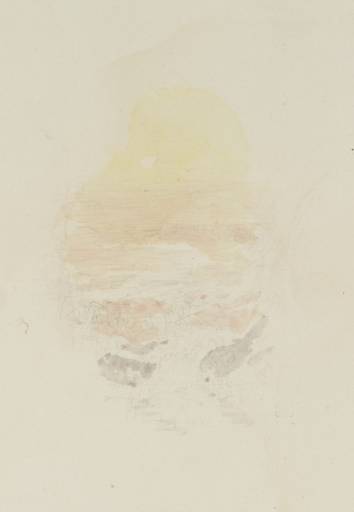This sketch belongs to a large group of preliminary studies which relate to Turner’s vignette illustrations for John Macrone’s 1839 edition of Thomas Moore’s
The Epicurean, a Tale: and Alciphron, a Poem. The study shares the same size, palette, and style as nine other works in this group, suggesting that Turner produced them all at around the same time (see also Tate
D27631–D27634,
D27636,
D27637,
D27640–D27642; Turner Bequest CCLXXX 114–117, 119, 120, 123–5).
Jan Piggott has identified the scene as a preliminary sketch for
The Nile, circa 1838 (untraced),
1 one of four finished designs that Turner produced for Moore’s fantastical prose tale
The Epicurean.
2 The watercolour was engraved by Edward Goodall,
3 and illustrates part of the story where the hero Alciphron and his love Alethe, complete their escape from the Priests of Memphis by sailing away down the Nile:
From the boats of all descriptions that lay idle beside the bank, I now selected one, in every respect, suited to my purpose ... and after a short delay, we were again afloat down the current; – the sun just then sinking, in conscious glory, over his own golden shrines in the Libyan waste.
The evening was calmer and more lovely than any that had yet smiled upon our voyage; and, as we left the shore, a strain of sweet melody came soothingly over our ears ... And thus did the hours of that night pass along ...Not a feature of the whole scene but lives, at this moment, freshly in my memory;– the broken star-light on the water;– the rippling sound of the boat, as, without oar or sail, it went, like a thing of enchantment, down the stream
(The Epicurean, 1839, pp.148–151)
The figures and boats, as well as the meandering river and distant pyramids, all of which are just barely visible in this delicate sketch, appear in far more detail in Goodall’s engraving after the finished composition. Turner has suffused the scene with broad yellow and orange washes to indicate a balmy sunset evening.

